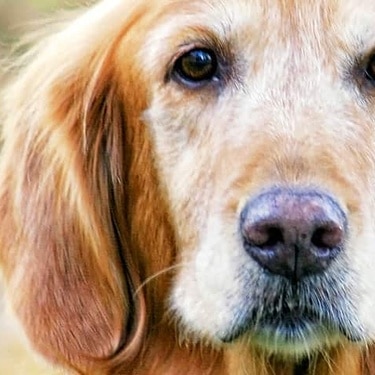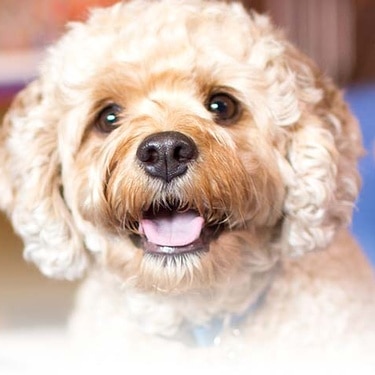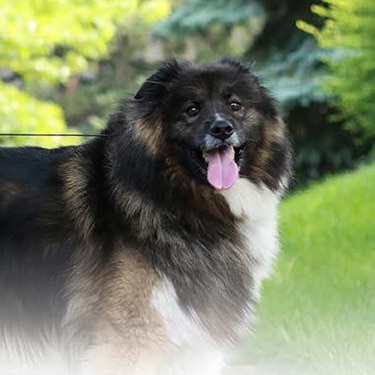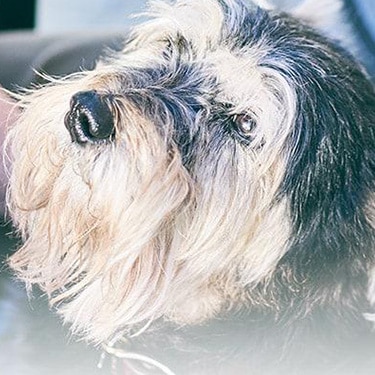
-
Find the right food for your petTake this quiz to see which food may be the best for your furry friend.Find the right food for your petTake this quiz to see which food may be the best for your furry friend.Health CategoryFeatured products
 Hill's Science Diet Adult Healthy Mobility Large Breed Chicken Meal, Barley & Brown Rice Recipe Dog Food
Hill's Science Diet Adult Healthy Mobility Large Breed Chicken Meal, Barley & Brown Rice Recipe Dog FoodAdvanced nutrition shown to support joint health and improve mobility
Shop Now Adult Light Large Breed Chicken Meal & Barley Recipe Dog Food
Adult Light Large Breed Chicken Meal & Barley Recipe Dog FoodFewer calories for less active large breed dogs
Shop Now Adult Large Breed Chicken & Barley Recipe Dog Food
Adult Large Breed Chicken & Barley Recipe Dog FoodSupports healthy joints, lean muscle, and beautiful coat for large breed dogs
Shop NowFeatured products Adult Oral Care Chicken & Brown Rice Recipe Cat Food
Adult Oral Care Chicken & Brown Rice Recipe Cat FoodClinically proven kibble technology to reduce plaque & tartar build-up
Shop Now Adult Sensitive Stomach & Skin Pouch Variety 12 Pack Cat Food, Chicken & Beef, Salmon & Tuna
Adult Sensitive Stomach & Skin Pouch Variety 12 Pack Cat Food, Chicken & Beef, Salmon & TunaCarefully made, gourmet daily nutrition. Tasty chunks with Salmon & Tuna in a decadent gravy. Supports digestive health, nourishes skin and promotes a lustrous fur.
Shop Now Adult Perfect Digestion Chicken, Barley & Whole Oats Recipe Cat Food
Adult Perfect Digestion Chicken, Barley & Whole Oats Recipe Cat FoodHill's Science Diet's breakthrough nutrition supports ultimate digestive well-being & healthy microbiome
Shop Now -
DogCat
- Cat Tips & Articles
-
Health Category
- Weight
- Skin & Food Sensitivities
- Urinary
- Digestive
- Kidney
- Dental
- Serious Illness
-
Life Stage
- Kitten Nutrition
- Adult Nutrition
Featured articles Cat vs. Dog: Which Is the Best Pet for Me?
Cat vs. Dog: Which Is the Best Pet for Me?Learn about important differences between dogs and cats, such as cost & space considerations. These factors can help you decide which pet is best for you.
Read More Fun Ideas for Kids and Pets This Summer
Fun Ideas for Kids and Pets This SummerOutdoor summer activities with your dog or cat can be fun for kids, too. Learn how they also teach kids responsibility & creates a bond with their pet.
Read More Adopting a Pet: What You Need to Know
Adopting a Pet: What You Need to KnowLearn the basics of adopting a pet, including where to begin and common questions you should ask yourself when deciding which kind of pet is best for you.
Read More -


Is training an aggressive dog possible? Yes. Aggression in dogs, whether it be toward a dog's owner or other dogs, is a serious behavior that should be adjusted with the help of a professional dog trainer. Of course you can work on basic training in your home, but serious effort will need to be taken to first identify what in your dog's environment makes him aggressive and then take steps to change your pup's behavior.
Aggression in Dogs: The Warning Signs
Aggression is a term that is used to explain multiple dog behaviors. Usually aggressive behavior will start as a warning, but eventually it may lead to an attack, which is why training an aggressive dog is so important.
Here are some ways a dog may exhibit aggressive behavior:
- Growling
- Standing rigid and/or still
- Showing teeth
- Snarling (growling while showing teeth)
- A threatening or guttural bark
- Lunging or charging at a human
- Mouthing/light biting without applying pressure
- Snapping or nipping at a person without leaving a mark
- Biting that causes bruising or puncture wounds
- Repeated bites in rapid succession
Reasons Dogs May Show Signs of Aggression
There are many reasons dogs lash out. The American Society for the Prevention of Cruelty to Animals (ASPCA) says that dogs fall into one of the following categories of aggression:
- Territorial
- Possessive
- Protective
- Fearful
- Unsocialized
- Defensive
- Experiencing pain
Aggression can manifest for a number of different reasons, but many are due to environmental factors. If you adopted your dog from a shelter, he may have been abused and certain triggers could set him off. This is why letting him know that he is loved and creating a safe environment for him are so important.
If your dog is acting hostile after getting hurt, he is most likely experiencing pain and when the pain is relieved, the aggression will go away. Be cognizant of this–while you want to do everything to help him, trying to alleviate his pain may cause more discomfort for him and cause him to lash out. If this ends up being the case, you should call your veterinarian immediately about how to properly bring him in for examination.
A territorial dog may show signs of aggression when another human or animal approaches the item he feels possessive of, such as a toy or even his favorite human. In this case, your dog will need to be trained to respect boundaries and that protection is unnecessary. This one is a little more tricky because it is more of an innate sense of aggression, but it can sometimes be brought on by a certain upbringing. If your dog is used to having all the toys in his home to himself, a new pup in the house might upset that balance and cause him to get defensive. If this is the case, work slowly to introduce him to the new changes slowly so that he can get used to the idea over time, rather than right away.
Once you are able to identify why your dog is acting aggressively, you'll be better able to personalize his training. Similarly, you may be able to remove or change his environment.


Tasty Tips
How to Train an Aggressive Dog
The first step to training an aggressive dog is to identify who he is aggressive toward. Does your dog show signs of aggression to a particular family member or friend, strangers, or other animals? Also, as mentioned above, it's important to find out what in his environment is making him angry.
Once you're aware of what causes your dog's aggression and to whom he is aggressive, it's time to work one-on-one with a professional dog trainer. If you aren't sure who to hire, contact your veterinarian for a recommendation. Also, according to the ASPCA, "Some aggressive dogs behave the way they do because of a medical condition or complication." Before you start any training, check with your vet to make sure your dog is healthy. A visit may help you identify any underlying health issues that may be causing your pet's demeanor.
Never Ignore Aggression
This can be a good tip for a couple of reasons. The obvious one is that aggression is an undesirable trait that could lead to someone, or even your dog, getting hurt. If you notice aggression in a dog that you don't know, it is best to leave it alone. If these traits are being exhibited by your own dog is necessary to ensure you find out why, so you can take steps to reduce his aggression.
The other reason for not ignoring aggression could be of vital importance to your safety. As your pack leader, your dog will have a natural defensive mechanism to keep you safe from anything it deems as a threat. If you notice any of the signs of aggression in your normally tame dog it might be worth a quick investigation of your surroundings. Your dog's sense of smell and hearing are much greater than humans', so they will be able to recognize danger much quicker. Whether it is an intruder in your home or a wild animal in the vicinity, your dog's aggression signs could actually just be a sign of warning for whatever danger exists to stay away.
Lastly, never punish your dog for aggression. Dogs don't understand punishment and thus are more likely to act out or act more aggressive when punishment is used. Instead, the best way to train away aggressive behavior is to reward good behavior. Sometimes your dog may need a little reminder that you are in charge, but ultimately he will respond best to reconditioning through reward-based training.
Much like children, dogs need to be conditioned to not act out. Consistent aggressive behavior is usually symptomatic of a larger issue that needs to be identified so you can change it in his environment. Once you identify his trigger, you can work with him, as well as a vet or trainer to help you both learn how to reduce his aggression. A little bit of love and patience can go a long way in helping him become more docile.


Erin Ollila believes in the power of words and how a message can inform—and even transform—its intended audience. Her writing can be found all over the internet and in print, and includes interviews, ghostwriting, blog posts, and creative nonfiction. Erin is a geek for SEO and all things social media. She graduated from Fairfield University with an M.F.A. in Creative Writing. Reach out to her on Twitter @ReinventingErin or learn more about her at http://erinollila.com.
Related products

Fewer calories for less active large breed dogs

Advanced nutrition shown to support joint health and improve mobility

Supports healthy joints, lean muscle, and beautiful coat for large breed dogs

Fewer calories for less active dogs
Related articles

Learn about choosing the right dog food to help ensure your mature older dog will receive the correct balance of nutrition.

A little exercise can make a big difference. Not only will it enhance your pet’s health, but it will beef up your relationship as well.

Learn how to stop your dog from begging at the dinner table, and understand how it can help contribute to his health.

Though it may seem like your four-legged friend loves nothing more than to nap on the couch, dogs need regular exercise to stay healthy just like people do.

Put your dog on a diet without them knowing
Our low calorie formula helps you control your dog's weight. It's packed with high-quality protein for building lean muscles, and made with purposeful ingredients for a flavorful, nutritious meal. Clinically proven antioxidants, Vitamin C+E, help promote a healthy immune system.
Put your dog on a diet without them knowing
Our low calorie formula helps you control your dog's weight. It's packed with high-quality protein for building lean muscles, and made with purposeful ingredients for a flavorful, nutritious meal. Clinically proven antioxidants, Vitamin C+E, help promote a healthy immune system.

